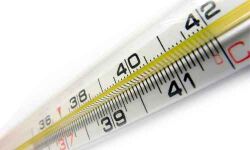- Home
- Medical news & Guidelines
- Anesthesiology
- Cardiology and CTVS
- Critical Care
- Dentistry
- Dermatology
- Diabetes and Endocrinology
- ENT
- Gastroenterology
- Medicine
- Nephrology
- Neurology
- Obstretics-Gynaecology
- Oncology
- Ophthalmology
- Orthopaedics
- Pediatrics-Neonatology
- Psychiatry
- Pulmonology
- Radiology
- Surgery
- Urology
- Laboratory Medicine
- Diet
- Nursing
- Paramedical
- Physiotherapy
- Health news
- Fact Check
- Bone Health Fact Check
- Brain Health Fact Check
- Cancer Related Fact Check
- Child Care Fact Check
- Dental and oral health fact check
- Diabetes and metabolic health fact check
- Diet and Nutrition Fact Check
- Eye and ENT Care Fact Check
- Fitness fact check
- Gut health fact check
- Heart health fact check
- Kidney health fact check
- Medical education fact check
- Men's health fact check
- Respiratory fact check
- Skin and hair care fact check
- Vaccine and Immunization fact check
- Women's health fact check
- AYUSH
- State News
- Andaman and Nicobar Islands
- Andhra Pradesh
- Arunachal Pradesh
- Assam
- Bihar
- Chandigarh
- Chattisgarh
- Dadra and Nagar Haveli
- Daman and Diu
- Delhi
- Goa
- Gujarat
- Haryana
- Himachal Pradesh
- Jammu & Kashmir
- Jharkhand
- Karnataka
- Kerala
- Ladakh
- Lakshadweep
- Madhya Pradesh
- Maharashtra
- Manipur
- Meghalaya
- Mizoram
- Nagaland
- Odisha
- Puducherry
- Punjab
- Rajasthan
- Sikkim
- Tamil Nadu
- Telangana
- Tripura
- Uttar Pradesh
- Uttrakhand
- West Bengal
- Medical Education
- Industry
PET/CT useful diagnostic tool for evaluating unexplained fever

USA: 18F-FDG PET/CT can be used for evaluating fevers with an unexplained origin, a recent study in the journal Clinical Infectious Diseases has revealed.
This imaging technique allows for accurate localization of foci of hypermetabolism based on 18FDG uptake in glycolytically-active cells that may represent inflammation, infection, or neoplasia.
William F Wright, Department of Medicine, Johns Hopkins University School of Medicine, and colleagues discussed how the use of PET/CT can lead to faster diagnosis, as well as more accurate care delivery.
To determine how effective PET/CT is in evaluating unexplained fever, the researchers completed a literature review of four studies. Based on their study, they found overall sensitivity of 97.9 percent with an over-arching agreement of 78.9 percent with other diagnostic techniques.
This imaging technique allows for accurate localization of foci of hypermetabolism based on 18FDG uptake in glycolytically-active cells that may represent inflammation, infection, or neoplasia. If there occurs abnormal uptake it can help direct further investigation that may yield a final diagnosis. When there is a lack of abnormal update there is a reasonable assurance that these conditions are not present thereby helps in avoiding unnecessary additional testing.
The researchers identified a patient having a fever of unknown origin if she or he had an unexplained fever for three outpatient visits or for three days in the hospital, and they put fevers into five categories -- non-infectious inflammatory disorders, cancers, infections, undiagnosed illness and miscellaneous other disorders. Assessment of these fevers frequently required imaging and laboratory tests.
There is an existing body of literature that points to the potential of these (PET/CET) scans to augment diagnostic accuracy and reduce costs in the long term.
These studies, recommend using 18F-FDG PET, mostly in conjunction with CT imaging, when either doctor do not have sufficient information or misleading clues about the condition of the patient.
"Clinicians and insurers should consider 18FDG-PET/CTas a useful tool when preliminary studies are unrevealing," concluded the authors.
The study, "Imaging a Fever – Redefining the role of 18FDG-PET/CT in FUO Investigations," is published in the journal Clinical Infectious Diseases.
Dr Kamal Kant Kohli-MBBS, DTCD- a chest specialist with more than 30 years of practice and a flair for writing clinical articles, Dr Kamal Kant Kohli joined Medical Dialogues as a Chief Editor of Medical News. Besides writing articles, as an editor, he proofreads and verifies all the medical content published on Medical Dialogues including those coming from journals, studies,medical conferences,guidelines etc. Email: drkohli@medicaldialogues.in. Contact no. 011-43720751


